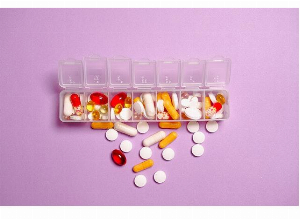Why do we need vitamin D?
Published Aug 21, 2020 • By Alexandre Moreau
Vitamin D deficiency is common in many Western countries, largely due to the low level of sun exposure, but also due to its rare presence in our diet. Nevertheless, it has many benefits and helps prevent many ailments. What is vitamin D? What are its functions? Where is it found? What are the signs of vitamin D deficiency?

What is vitamin D?
Vitamin D is a group of fat-soluble secosteroids. Together with its metabolite (end-product resulting from its degradation) calcitriol, it is essential for good bone mineralization.
Vitamin D can be obtained from food (exogenous, ingested through food, ≈ 20%), particularly through the consumption of fatty fish (salmon, mackerel, sardine, tuna, etc.), or by the skin (endogenous, produced in the skin, ≈ 80%) after exposure to the sun's rays (UVB). Because of this second type of absorption, the vitamin is nicknamed “the sunshine vitamin”.
The two most important compounds in the vitamin D group for humans are vitamin D3 (cholecalciferol), found in animal products, and vitamin D2 (ergocalciferol), produced by plants.
Both types of vitamin D are absorbed in the small intestine and then stored in fat tissue and the liver (as calcifediol, also known as 25-hydroxivitamin D or 25(OH)D).
They can also be transformed in the kidneys in their biologically active form (1,25-dihydroxyvitamin D, called calcitriol or 1,25(OH)2D). This latter form can then act at different levels of the body.
What is the role of vitamin D in the human body?
The main role of vitamin D is to promote the absorption of calcium and phosphate (from phosphorus) in the intestine and to promote the reabsorption of calcium in the kidneys (and thus decrease calcium elimination in the urine).
It thus helps maintain optimal levels of calcium (between 2.2 and 2.6 mmol/L) and phosphate (between 0.8 and 1.4 mmol/L and higher in newborns and children) in the blood, which are responsible for good bone mineralization (formation, growth and repair) and strength of the bones, cartilage and teeth.
Vitamin D also improves muscle function (better muscle strength and renewal of muscle fibers), ensures good nerve transmission, exerts neuroprotective effects in the brain which help fight cognitive decline associated with aging (and especially in Alzheimer's disease) and maintains proper blood clotting.
It also plays a role in hormone regulation (e.g. insulin, pituitary hormones, etc.), differentiation and activity of immune cells (strengthens the immune system, reduces inflammation and cardiovascular risks and helps to combat stress) and differentiation of skin cells (keratinocytes).
It can also prevent the development of certain infectious or autoimmune diseases (multiple sclerosis, type 1 diabetes, rheumatoid arthritis and lupus) and reduce the risk of cancer (mainly colorectal and breast cancer).
What are the causes and signs of vitamin D deficiency?
Vitamin D levels are measured during a blood test. Calcifediol is a good indicator of the body's vitamin D status and its level must be greater than 30 ng/mL (or 75 nmol/L) to assume normal levels of vitamin D, and should not exceed 100 ng/mL (or 250 nmol/L). Optimal vitamin D level should be 60 to 70 ng/mL (or 150 to 175 nmol/L).
Vitamin D concentration goes down with decreased intake or sun exposure (seasonal variations) and requires normal liver function.
Measuring calcitriol levels (the active form of vitamin D), however, is more complex because it requires a visit to a specialized laboratory. This measurement allows for any defects in vitamin D metabolism to be identified.
Vitamin D deficiency (especially in children in developing countries) or lack of sun exposure (especially in elderly people in care homes), but also digestive malabsorption (coeliac disease or gluten intolerance, fat malabsorption or steatorrhea, biliary disorders, laxative abuse, etc.), abnormalities in vitamin D metabolism (deficiency in 1-alpha-hydroxylase, the enzyme that converts vitamin D to calcitriol, in the kidneys, or to the calcitriol receptor), calcium deficiency and renal phosphate leak (genetic diseases) may be the cause of rickets in children and osteomalacia in adults.
The main signs of these last two conditions are bone deformities. Asthenia (fatigue), bone pain and muscle weakness (especially in the back, pelvis and legs) are also observed.
Over time, there is also a progressive decrease in bone mass (which accelerates at the time of menopause) associated with a decrease in the body's ability to absorb and synthesize vitamin D. This leads to the development of osteoporosis, which is characterized by an alteration in the microarchitecture of bone tissue, a decrease in bone strength and an increased risk of fractures.
Osteoporosis leads to acute or chronic pain (related to fractures), deformation of the spine (with breathing difficulties and walking difficulties), a marked decrease in height, followed by disability and loss of mobility.
How can you increase your vitamin D levels (sun, food, supplements, etc.)?
According to the British Nutrition Foundation, across the UK population approximately 1 in 5 people have low vitamin D levels (defined as serum levels below 25 nmol/L).
To remedy this, short exposures to the sun (15 to 30 minutes), several times a week, when the weather is clear, can help increase vitamin D levels in the blood.
In addition, some foods naturally contain vitamin D. These are mainly fatty fish (cod livers, salmon, sardines, mackerel, etc.), giblets (liver), egg yolk and certain mushrooms (especially shiitakes).
Finally, some foods can be enriched with vitamin D by the food industry (milk, cottage cheese, yoghurts, cereals, margarines).
Vitamin D supplements are necessary if:
Your serum concentration of 25(OH)D is < 10 ng/mL: take 4, 100,000 UI doses spaced 15 days apart;
Your serum concentration of 25(OH)D is > 10 ng/mL, but < 20 ng/mL: take 3, 100,000 UI doses spaced 15 days apart;
Your serum concentration of 25(OH)D is > 20 ng/mL, but < 30 ng/mL: take 2, 100,000 UI doses spaced 15 days apart.
In all cases, even if your concentration of 25(OH)D > 30 ng/mL, supplements are recommended. An optimal level of 60 to 70 ng/mL is desired. It is preferable to take regular daily supplements in drops in order to obtain a constant hormonal level of vitamin D over time.
Vitamin D3 or cholecalciferol (DELTA D3®) is mainly prescribed.
It is also possible to find vitamin D2 or ergocalciferol (DRISDOL®), although the latter is less effective and less stable.
Special forms, such as 25-OH cholecalciferol or calcifediol (RAYALDEE®) for patients with liver failure, 1-OH cholecalciferol or alfacalcidol for patients with renal failure, and 1-25-(OH)2 cholecalciferol or calcitriol (ROCALTROL®) for patients with vitamin resistance, may be prescribed.
There are also fixed-dose combination medicines with calcium:
- either 1 g of calcium combined with 880 IU of vitamin D (requires 1 intake/day);
- or 500 mg of calcium combined with 400 IU of vitamin D (requires 2 intakes/day).
It is advisable to take these supplements between meals for better absorption.
In addition, some populations are at higher risk of vitamin D deficiency: newborns, infants, pregnant women (vitamin D is necessary for growth and development) and the elderly (the capacity to synthesize vitamin D decreases with age), but also people with dark skin (high skin pigmentation with melanin, which blocks the UVB rays necessary for vitamin D synthesis), people on special diets (vegetarians who don't eat meat or fish, and even more so vegans, who also exclude eggs and dairy products) as well as conditions that induce intestinal malabsorption (coeliac disease).
The dose of vitamin D to combat vitamin D deficiency is then adapted to each individual.
Finally, in the event of oversupplementation, vitamin D can accumulate in the body and cause various disorders (headaches, nausea, vomiting, weight loss, intense fatigue), with the risk of excessively high calcium levels in the blood, urinary tract stones and/or calcium deposits in the kidneys. However, this excess of vitamin D is rare.
In closing, vitamin D is a lipophilic hormone with multiple benefits. It is even thought to play a role in regulating and suppressing the inflammatory response behind the acute respiratory distress syndrome that characterizes the severe and often lethal forms of Covid-19...
Was this article helpful to you? Feel free to share your thoughts and questions in the comments!
Take care!
Sources :
https://www.anses.fr/fr/content/vitamine-d
http://alimentation-sante.org/wp-content/uploads/2016/05/20160429_EtatDesLieux-VitamineD.pdf
http://www.societechimiquedefrance.fr/Vitamine-D.html
https://www.cancer.be/vitamine-d/quest-ce-que-la-vitamine-d
https://www.has-sante.fr/upload/docs/application/pdf/2013-02/utilite_clinique_du_dosage_de_la_vitamine_d_-_note_de_cadrage.pdf
https://www.santepubliquefrance.fr/determinants-de-sante/nutrition-et-activite-physique/documents/article/statut-en-vitamine-d-de-la-population-adulte-en-france-l-etude-nationale-nutrition-sante-enns-2006-20073
http://www.academie-medecine.fr/wp-content/uploads/2017/01/tap-1011-10151.pdf
http://www.academie-medecine.fr/communique-de-lacademie-nationale-de-medecine-vitamine-d-et-covid-19/
Comments
You will also like

What are the dangers associated with the over-the-counter sale of certain medicines?
Dec 19, 2020 • 6 comments

 Facebook
Facebook Twitter
Twitter

